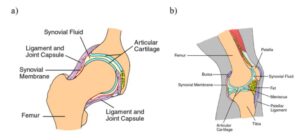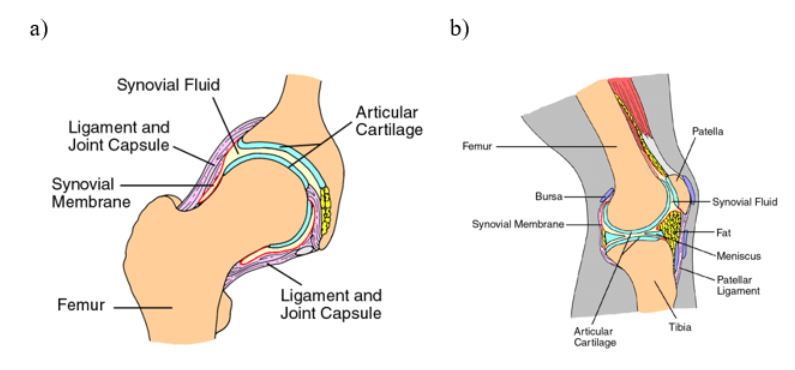Joint replacement surgeries have revolutionized the field of orthopedics, providing relief and improved mobility to many patients suffering from joint diseases such as osteoarthritis and rheumatoid arthritis. Nowadays, due to an aging population and a desire for an active lifestyle, the number of these operations has considerably increased [1, 2]. Studies indicated that wear and debris are the main problems leading to the failure of joint implants, and lubrication can considerably decline these acute complications [3, 4]. It is noticeable that the existence of lubrication is evident in healthy synovial joints such as the hip and knee joints, where it relies on the presence of synovial fluid (Figure 1). Thus, I firmly believe that lubrication is crucial in designing joint replacements because it ensures the durability and functionality of joint implants while reducing complications and patient pain. To end this, the main purpose of my PhD project is to design a hip prosthesis that can replicate the natural lubrication found in synovial joints.

In conclusion, the significance of lubrication in orthopedic implant design cannot be overstated. It can noticeably contribute to the accomplishment of life-altering joint replacement surgeries as lubrication substantially enhances the durability and functionality of prostheses by decreasing friction, minimizing complications, and increasing patient comfort.
References
[1] A. Ford, Z. Hua, S. J. Ferguson, L. A. Pruitt, and L. Gao, “A 3D-transient elastohydrodynamic lubrication hip implant model to compare ultra high molecular weight polyethylene with more compliant polycarbonate polyurethane acetabular cups,” Journal of the Mechanical Behavior of Biomedical Materials, vol. 119, p. 104472, 2021.
[2] L. Wang, G. Isaac, R. Wilcox, A. Jones, and J. Thompson, “Finite element analysis of polyethylene wear in total hip replacement: A literature review,” Proceedings of the Institution of Mechanical Engineers, Part H: Journal of Engineering in Medicine, vol. 233, no. 11, pp. 1067-1088, 2019.
[3] L. Mattei, F. Di Puccio, B. Piccigallo, and E. Ciulli, “Lubrication and wear modelling of artificial hip joints: A review,” Tribology International, vol. 44, no. 5, pp. 532-549, 2011.
[4] L. Gao, X. Lu, X. Zhang, Q. Meng, and Z. Jin, “Lubrication Modelling of Artificial Joint Replacements: Current Status and Future Challenges,” Lubricants, vol. 10, no. 10, p. 238, 2022.
[5] https://childrenswi.org/medical-care/rheumatology/conditions/anatomy-of-a-joint

This article was written by Mahdieh Mosayebias part of an ongoing series of scientific communications written and curated by BioTrib’s Early Stage Researchers.
Mahdieh is researching the Design of Self Lubricating Prothesis at ETH Zurich, Switzerland.

